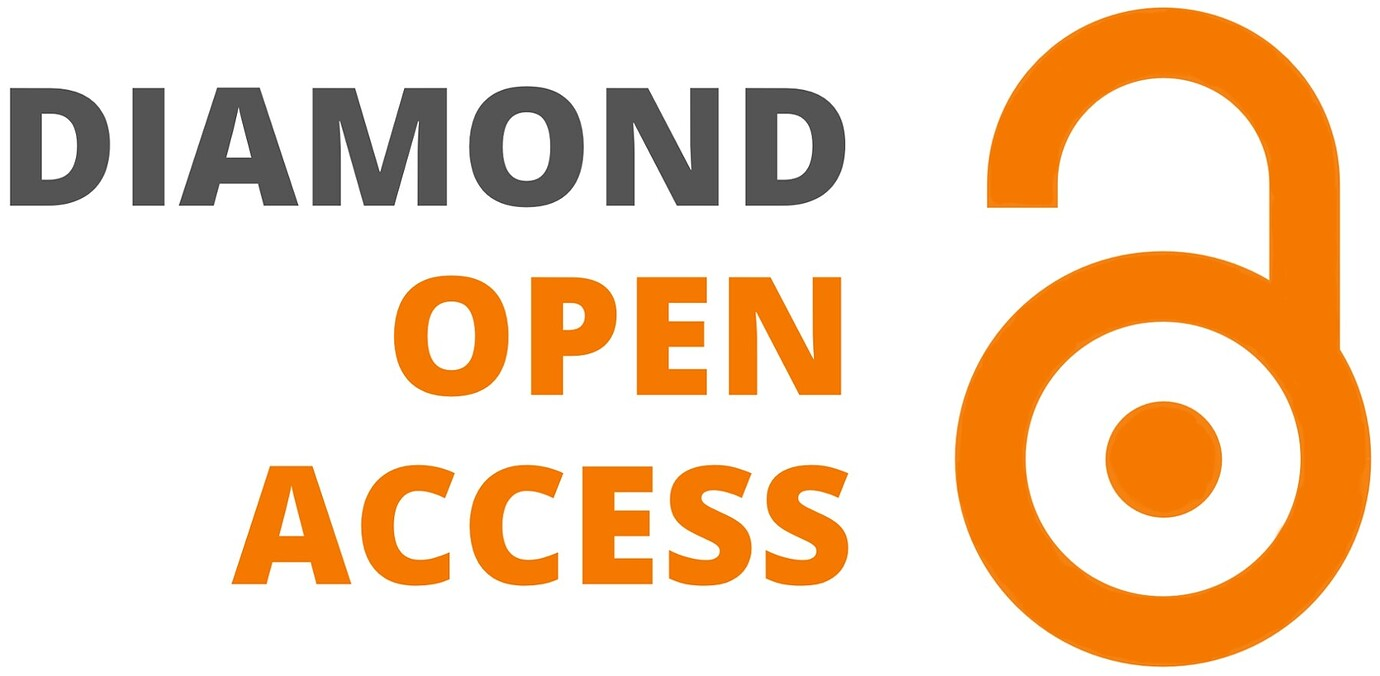Image description in bilingual neurotypical adults: Analysis of performance based on the language used.
DOI:
https://doi.org/10.61989/m7jkds58Keywords:
assessment, discourse, linguistic difference, bilingualism, French-English, Franco-OntarianAbstract
Background. Language assessment in adults often includes an analysis of oral discourse. Among the methods commonly used by speech-language pathologists, the picture description task is particularly prevalent in both formal and informal assessment contexts. This task allows for the collection of a language sample structured around a defined theme, thus facilitating comparisons between individuals. The obtained sample can be analyzed in terms of lexical and semantic content as well as syntactic structure. Performance on the picture description task may vary based on certain demographic characteristics; however, the performance of bilingual individuals based on the language used in this task remains underexplored.
Objective. The main objective of this study was to compare the performance of neurotypical bilingual adults (French-English) in image description tasks in both French and English.
Methods.Thirty neurotypical bilingual (French-English) participants were recruited in Ontario, Canada. Each participant described three images in both French and English. The recordings were transcribed and analyzed using the Computerized Language Analysis (CLAN) software, applying the MACS protocol for analyzing francophone discourse. The extracted linguistic variables were compared between the two languages.
Results. Data analysis revealed significant differences between descriptions in French and English. The French descriptions contained more repetitions compared to English and little code-switching, suggesting linguistic insecurity where participants seemed to search for words, leading to repetitions in an attempt to deliberately avoid code-switching. An increased use of general verbs was observed in English, which could partly be explained by the difficulty of translating or retrieving more semantically complex specific verbs, and possibly due to lower proficiency in the other language. These differences were significant only for the “cat in the tree” image, highlighting that each task and stimulus imposes distinct linguistic and cognitive demands.
Conclusion. This study highlights the differences in linguistic performance between French and English among bilinguals in a minority context. The findings underscore the importance for speech-language pathologists to consider these disparities when assessing linguistic competence in bilingual contexts. Finally, the study calls for the development of assessment protocols and tools tailored to the realities of bilingual populations to better address their specific needs and enhance speech-language pathology practices.
References
Allen, S. E. M., & Dench, C. (2015). Calculating mean length of utterance for eastern Canadian Inuktitut. First Language, 35(4-5), 377-406. https://doi.org/10.1177/0142723715596648
Bélanger, R., Mayer-Crittenden, C., Mainguy, J., & Coutu, A. (2018). Enquête sur l’offre active pour les services auxiliaires de santé du Nord-Est de l’Ontario. Reflets, 24(2), 212–247. https://doi.org/10.7202/1053869ar
Benton, A. L., Hamsher, K. D., & Sivan, A. B. (1994). Multilingual Aphasia Examination. Psychological Assessment Resources, Inc.
Bergeron, C. (2023). L’insécurité linguistique dans les communautés étudiantes de l’Ontario. Cahiers de l’ILOB, 13, 123-144. https://doi.org/10.18192/olbij.v13i1.6603
Bergeron, C., Blanchet, P., & Lebon-Eyquem, M. (2022). Étude exploratoire de l’insécurité linguistique et de la glottophobie chez des étudiants universitaires de l’Ontario. Minorités linguistiques et société / Linguistic Minorities and Society, 19, 3–25. https://doi.org/10.7202/1094396ar
Boissonneault, J. (2016). Rétrospective sur le français parlé en Ontario. Revue du Nouvel-Ontario, 41, 197-231. https://doi.org/10.7202/1038961ar
Boissonneault, J. (2018). Essai sur le français parlé en Ontario : entre représentations et légitimité. Cahiers Charlevoix, 12, 89–116. https://doi.org/10.7202/1048917ar
Boucher, J., Brisebois, A., Slegers, A., Courson, M., Désilets-Barnabé, M., Chouinard, A.-M., Gbeglo, V., Marcotte, K., & Brambati, S. M. (2022). Picture description of the Western Aphasia Battery picnic scene: Reference data for the french canadian population. American Journal of Speech-Language Pathology, 31(1), 257-270. https://doi.org/10.1044/2021_AJSLP-20-00388
Boucher, J., Marcotte, K., Brisebois, A., Courson, M., Houzé, B., Desautels, A., Léonard, C., Rochon, E., & Brambati, S. M. (2022). Word-finding in confrontation naming and picture descriptions produced by individuals with early post-stroke aphasia. The Clinical Neuropsychologist, 36(6), 1422-1437. https://doi.org/10.1080/13854046.2020.1817563
Boucher, J., Slegers, A., & Brambati, S. M. (2019). Cross-sectional analysis of picture descriptions of healthy young and older adults. Neuropsychologie clinique et appliquée, 3(Fall 2019), 132-145.
Bryant, L., Ferguson, A., & Spencer, E. (2016). Linguistic analysis of discourse in aphasia: A review of the literature. Clinical Linguistics & Phonetics, 30(7), 489-518. https://doi.org/10.3109/02699206.2016.1145740
Bryant, L., Spencer, E., & Ferguson, A. (2017). Clinical use of linguistic discourse analysis for the assessment of language in aphasia. Aphasiology, 31(10), 1105–1126. https://doi.org/10.1080/02687038.2016.1239013
Capilouto, G. J., Wright, H. H., & Maddy, K. M. (2016). Microlinguistic processes that contribute to the ability to relay main events: Influence of age. Aging, Neuropsychology, and Cognition, 23(4), 445–463. https://doi.org/10.1080/13825585.2015.1118006
Engelter, S. T., Gostynski, M., Papa, S., Frei, M., Born, C., Ajdacic-Gross, V., Gutzwiller, F., & Lyrer, P. A. (2006). Epidemiology of aphasia attributable to first ischemic stroke: Incidence, severity, fluency, etiology, and thrombolysis. Stroke, 37(6), 1379-1384. https://doi.org/10.1161/01.STR.0000221815.64093.8c
Fabbro, F. (2001). The bilingual brain: Bilingual aphasia. Brain and Language, 79(2), 201-210 https://doi.org/10.1006/brln.2001.2480
Faroqi-Shah, Y., Frymark, T., Mullen, R., & Wang, B. (2010). Effect of treatment for bilingual individuals with aphasia: A systematic review of the evidence. Journal of Neurolinguistics, 23(4), 319-341. https://doi.org/10.1016/j.jneuroling.2010.01.002
Fridriksson, J., den Ouden, D.-B., Hillis, A. E., Hickok, G., Rorden, C., Basilakos, A., Yourganov, G., & Bonilha, L. (2018). Anatomy of aphasia revisited. Brain, 141(3), 848–862. https://doi.org/10.1093/brain/awx363
Fromm, D., Chern, S., Geng, Z., Kim, M., Greenhouse, J., & MacWhinney, B. (2024). Automated analysis of fluency behaviors in aphasia. Journal of Speech, Language, and Hearing Research, 67(7), 2333-2342. https://doi.org/10.1044/2024_JSLHR-23-00659
Garcia, L. J., Paradis, J., Sénécal, I., & Laroche, C. (2006). Utilisation et satisfaction à l’égard des outils en français évaluant les troubles de la communication. Revue canadienne d’orthophonie et d’audiologie, 30(4), 239-249. https://www.cjslpa.ca/detail.php?lang=en&ID=937
Gathercole, V.C.M. (2014). Bilingualism matters: One size does not fit all. International Journal of Behavioral Development, 38(4), 359-366. https://doi.org/10.1177/0165025414531676
Goodglass, H., Kaplan, E., & Barresi, B. (2000). The Boston Diagnostic Aphasia Examination (3e ed.). Lippincot.
Gordon, J. K. (2008). Measuring the lexical semantics of picture description in aphasia. Aphasiology, 22(7-8), 839-852. https://doi.org/10.1080/02687030701820063
Hegde, M. N., & Freed, D. B. (2022). Assessment of communication disorders in adults: Resources and protocols. Plural Publishing, Inc.
IBM Corp. Released 2023. IBM SPSS Statistics for Windows, version 29.0.2.0.
Kaplan, E., Goodglass, H., & Weintraub, S., (2001). Boston Naming Test. Lippincott Williams & Wilkins.
Kertesz, A. (2007). Western Aphasia Battery-Revised (WAB-R). Pearson.
Kohnert, K., Ebert, K. D., & Pham, G. T. (2021). Language disorders in bilingual children and adults (3e ed.). Plural Publishing, Inc.
Leaman, M. C., & Edmonds, L. A. (2023). Analyzing language in the picnic scene picture and in conversation: The type of discourse sample we choose influences findings in people with aphasia. American Journal of Speech-Language Pathology, 32(4), 1413–1430. https://doi.org/10.1044/2023_ajslp-22-00279
Li, R., Faroqi-Shah, Y., & Wang, M. (2019). A comparison of verb and noun retrieval in Mandarin–English bilinguals with English-speaking monolinguals. Bilingualism: Language and Cognition, 22(5), 1005–1028. https://doi.org/10.1017/S1366728918000913
Li, R., & Kiran, S. (2024). Noun and verb impairment in single-word naming and discourse production in Mandarin-English bilingual adults with aphasia. Aphasiology, 38(2), 337-365. https://doi.org/10.1080/02687038.2023.2189994
Mackenzie, C., Brady, M., Norrie, J., & Poedjianto, N. (2007). Picture description in neurologically normal adults: Concepts and topic coherence. Aphasiology, 21(3-4), 340-354. https://doi.org/10.1080/02687030600911419
MacWhinney, B. (2017). The CHILDES project. Tools for analyzing talk part 1: The chat transcription format. https://doi.org/10.4324/9781315805672
MacWhinney, B., Fromm, D., Forbes, M., & Holland, A. (2011). AphasiaBank: Methods for studying discourse. Aphasiology, 25(11), 1286-1307. https://doi.org/10.1080/02687038.2011.589893
Marcotte, K., Lachance, A., Brisebois, A., Mazzocca, P., Désilets-Barnabé, M., Desjardins, N., & Brambati, S. M. (2022). Validation of videoconference administration of picture description from the Western Aphasia Battery-Revised in neurotypical Canadian French speakers. American Journal of Speech-Language Pathology, 31(6), 2825–2834. https://doi.org/10.1044/2022_AJSLP-22-00084
Massina, C., Le Gall, D., Aubin, G., Mazaux, J.-M., Galanthe, E., Sainte-Foie, S., & Emile, J. (2000). Une observation de la récupération différentielle des deux langues chez une patiente aphasique bilingue français-créole guadeloupéen. Annales de Réadaptation et de Médecine Physique, 43(8), 450-464. https://doi.org/10.1016/S0168-6054(00)00049-0
Mätzig, S., Druks, J., Masterson, J., & Vigliocco, G. (2009). Noun and verb differences in picture naming: Past studies and new evidence. Cortex, 45(6), 738–758. https://doi.org/10.1016/j.cortex.2008.10.003
Mayer-Crittenden, C., Thordardottir, E., Robillard, M., Minor-Corriveau, M., & Bélanger, R. (2014). Données langagières franco-ontariennes: effets du contexte minoritaire et du bilinguisme. Revue canadienne d’orthophonie et d’audiologie, 38(3), 304-324. https://www.cjslpa.ca/detail.php?lang=en&ID=1158
Nicholas, L. E., & Brookshire, R. H. (1993). A system for quantifying the informativeness and efficiency of the connected speech of adults with aphasia. Journal of Speech, Language, and Hearing Research, 36(2), 338-350. https://doi.org/10.1044/jshr.3602.338
Nikitha, M., Darshan, H. S., Abhishek, B. P., & Goswami, S. P. (2020). Clinical profiling of a bilingual client with anomic aphasia. Annals of Neurosciences, 27(2), 75–82. https://doi.org/10.1177/0972753120927518
O'Halloran, R., Worrall, L. E., & Hickson, L. (2009). The number of patients with communication related impairments in acute hospital stroke units. International Journal of Speech-Language Pathology, 11(6), 438-449. https://doi.org/10.3109/17549500902741363
Paradis, M. (2011). Principles underlying the Bilingual Aphasia Test (BAT) and its uses. Clinical Linguistics & Phonetics, 25(6-7), 427-443. https://doi.org/10.3109/02699206.2011.560326
Park, H., Obermeyer, J., Kornisch, M., Hall, J., & Ontario, C. (2023). Semantic aspects of verb production in various discourse tasks in people with nonfluent aphasia. American Journal of Speech-Language Pathology, 32(5S), 2418–2429. https://doi.org/10.1044/2023_AJSLP-22-00293
Prior, A., MacWhinney, B., & Kroll, J. F. (2007). Translation norms for English and Spanish: The role of lexical variables, word class, and L2 proficiency in negotiating translation ambiguity. Behavior Research Methods, 39(4), 1029-1038. https://doi.org/10.3758/BF03193001
Riccardi, A. (2012). Bilingual aphasia and code-switching: representation and control. Dans M. R. Gitterman, M. Goral, & L. K. Obler (dir.), Aspects of multilingual aphasia (vol. 8, p. 141–157). Multilingual Matters.
Rivard, C. (2020). L’évaluation des troubles acquis du langage chez les adultes bilingues en Ontario [Mémoire de maitrise inédit]. Université Laurentienne.
Rofes, A., & Mahon, B. Z. (2021). Naming: Nouns and verbs. Dans E. Mandonnet & G. Herbet (dir.), Intraoperative mapping of cognitive networks: Which tasks for which locations (p. 171-194). Springer. https://doi.org/10.1007/978-3-030-75071-8_11
Ruba, S., Prabhu, S., & Samayan, K. (2023). Types of code-switching among young adults with bilingualism. Rupkatha Journal on Interdisciplinary Studies in Humanities, 15(3). https://doi.org/10.21659/rupkatha.v15n3.08
Seçkin, M., & Savaş, M. (2023). Picnic, accident or cookies? A systematic approach to guide the selection of the picture definition tasks in linguistic assessment. Archives of Clinical Neuropsychology, 38(2), 236–246. https://doi.org/10.1093/arclin/acac109
Stark, B. C., Dutta, M., Murray, L. L., Fromm, D., Bryant, L., Harmon, T. G., Ramage, A. E., & Roberts, A. C. (2021). Spoken discourse assessment and analysis in aphasia: An international survey of current practices. Journal of Speech, Language, and Hearing Research, 64(11), 4366–4389. https://doi.org/10.1044/2021_jslhr-20-00708
Sung, J. E., DeDe, G., & Lee, S. E. (2016). Cross-linguistic differences in a picture-description task between Korean- and English-speaking individuals with aphasia. American Journal of Speech-Language Pathology, 25(4S), S813-S822. https://doi.org/10.1044/2016_AJSLP-15-0140
Swinburn, K., Porter, G., & Howard, D. (2004). Comprehensive Aphasia Test (CAT) [Database record]. APA PsycTests. https://doi.org/10.1037/t13733-000
Vandenborre, D., Visch-Brink, E., van Dun, K., Verhoeven, J., & Mariën, P. (2018). Oral and written picture description in individuals with aphasia. International Journal of Language & Communication Disorders, 53(2), 294-307. https://doi.org/10.1111/1460-6984.12348
Wilson, S. M., Eriksson, D. K., Schneck, S. M., Lucanie, J. M. (2018). A Quick Aphasia Battery (QAB) for efficient, reliable, and multidimensional assessment of language function. PLoS One, 13(2), e0192773. https://doi.org/10.1371/journal.pone.0192773
Zoom Video Communications, Inc. (2020). ZOOM cloud meetings (version 4.6.9) [application mobile]. App Store. https://apps.apple.com/us/app/zoom-cloud-meetings/id546505307
Zumbansen, A., Anglade, C., & Durand, E. (2023). Protocole MACS pour l’analyse des discours francophones dans CLAN : manuel de formation à la transcription, au codage et l’analyse de monologues francophones dans le programme CLAN. Disponible sur demande : azumbans@uottawa.ca
Downloads
Published
Issue
Section
Categories
License
Copyright (c) 2025 Émilie Godin, Sophie Laurence, Anna Zumbansen, Chantal Mayer-Crittenden

This work is licensed under a Creative Commons Attribution 4.0 International License.




